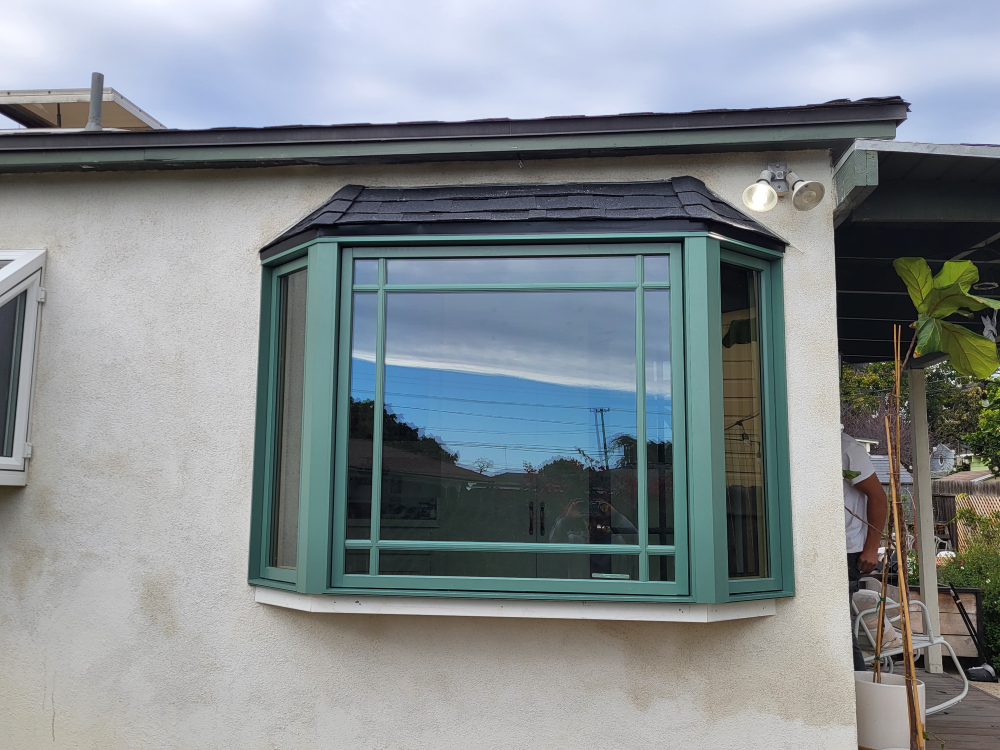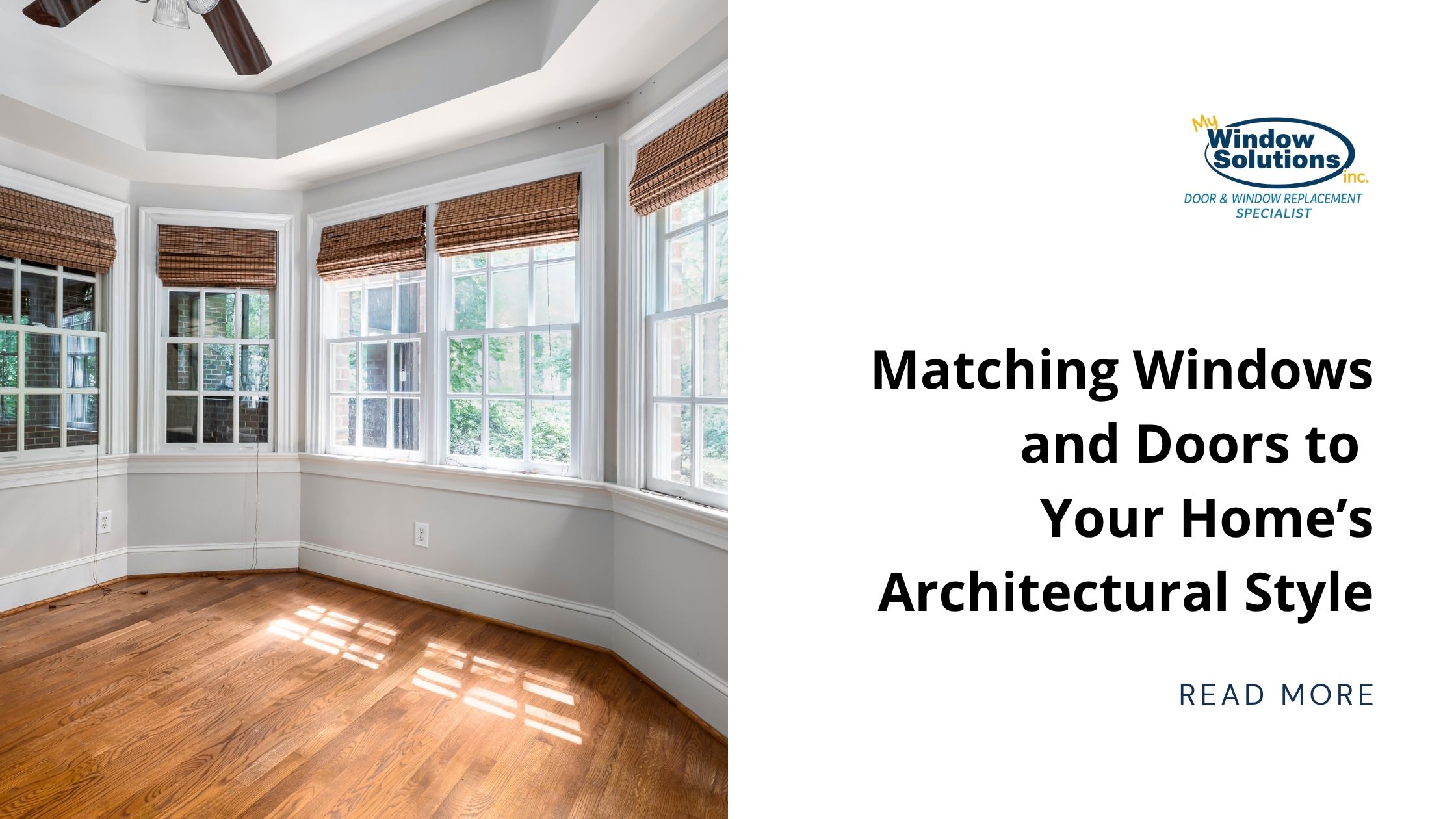- Ensuring windows and doors match a home’s architectural style preserves visual balance, authenticity, and long-term value.
- Material choice, proportion, and color are essential for aligning modern performance with traditional or contemporary design principles.
- My Window Solutions provides tailored window and door solutions that enhance beauty, energy efficiency, and architectural harmony for every home.
Windows and doors are more than functional features; they define the character, proportion, and authenticity of a home. The right match enhances both appearance and performance, while a mismatched choice can disrupt architectural harmony. Understanding how to pair them correctly with your home’s style, whether traditional, transitional, or modern, creates a balanced visual identity that stands the test of time.
This detailed guide explores how architectural history, materials, design details, and finishing touches influence window and door selection. The goal is to help homeowners, designers, and builders make thoughtful choices that enrich curb appeal, preserve historical integrity, and support long-term durability.
The Role of Architecture in Window and Door Selection
Every architectural style tells a story. Colonial, Craftsman, Mediterranean, or Modern, all evolved with specific proportions, materials, and design rules that guided how windows and doors were built. When replacements or upgrades are needed, aligning with those original principles maintains both beauty and value.
Windows and doors act as punctuation marks in the architectural language of a home. They highlight rhythm, symmetry, and geometry. For example, Georgian architecture favors order, balance, and evenly spaced multi-pane windows, while Tudor homes highlight steep gables and arched wooden doors. A modern minimalist home, on the other hand, values clean lines, larger glass surfaces, and subtle framing that lets natural light become a central feature.
Matching the window and door design to the home’s style is not about imitation but understanding proportion, material, and craftsmanship. That understanding ensures that even contemporary replacements respect the home’s original identity while improving comfort and efficiency.
Colonial and Georgian Architecture: Proportion and Symmetry
Colonial and Georgian homes are among the most easily recognizable due to their formal symmetry and classical proportions. These homes typically feature centered entryways, brick or wood exteriors, and windows arranged evenly on both sides of the door.
For Colonial and Georgian homes, double-hung windows with multiple panes are the hallmark feature. Common configurations include six-over-six or nine-over-nine patterns that create rhythm and visual order. Wooden or fiberglass frames painted in traditional whites or muted grays maintain the historical tone, while divided-light grids reinforce period accuracy.
Doors in Colonial and Georgian homes are usually paneled and flanked by sidelights or topped with transom windows. Brass hardware and classic black, red, or dark green finishes offer timeless elegance. If modern performance is desired, high-quality insulated glass and energy-efficient cores can be integrated discreetly without compromising the traditional look.
Victorian and Gothic Revival Homes: Ornamentation and Character
Victorian architecture emerged as a celebration of craftsmanship and decoration. It includes substyles such as Queen Anne, Gothic Revival, and Italianate, each with intricate woodwork and bold use of color.
Windows in Victorian homes often feature bay or bow shapes, stained or leaded glass, and elaborate trim detailing. Tall, narrow window profiles help accentuate the home’s verticality, while wood or wood-clad frames complement the elaborate trims and moldings.
Doors in Victorian homes are equally expressive. They might feature glass inserts, carved panels, or colored glass insets framed by decorative transoms. A deep, rich color palette like burgundy, forest green, or navy enhances visual drama. While preservation is essential, energy efficiency should not be ignored; modern glazing technologies can replicate historical looks while reducing heat transfer and glare.
Craftsman and Bungalow Homes: Natural Materials and Simplicity
The Craftsman movement was born from a desire to reconnect architecture with nature and craftsmanship. These homes emphasize exposed joinery, sturdy woodwork, and an earthy color palette.
Windows in Craftsman homes tend to be grouped and proportionally scaled to match low-pitched roofs and wide porches. Common choices include double-hung or casement windows with divided lights on the upper sash only. The frames are often made from wood or wood-alternative materials that mimic its texture and warmth.
Front doors in Craftsman-style homes are an essential feature. A solid wood or wood-look door with small glass panels at the top reflects honesty in design and attention to detail. Stained finishes in natural oak, walnut, or mahogany tones reinforce the connection to natural materials.
Because Craftsman homes thrive on proportion and texture, the hardware and finishing details should echo those values. Oil-rubbed bronze handles or matte black hinges create a handcrafted impression that respects the architecture’s intent.
Mediterranean and Spanish Revival Homes: Texture and Warmth
Mediterranean and Spanish Revival homes are defined by stucco exteriors, terracotta roofs, and an inviting, sun-washed color palette. These homes favor texture, curves, and organic materials that reflect their coastal and old-world inspirations.
Windows for Mediterranean-style homes often include arched tops, wrought iron grilles, and wooden shutters. The frames are typically wood, aluminum-clad wood, or composite materials painted in earth tones such as beige, olive, or rust. These windows enhance the sense of craftsmanship while supporting natural ventilation and light control.
Doors are equally expressive, arched or rectangular, with heavy wooden panels and ornate iron accents. Hand-forged hardware, detailed hinges, and decorative knockers add authenticity. Modern composite or fiberglass doors can successfully replicate this traditional aesthetic while offering weather resistance and minimal maintenance, particularly in humid or coastal environments.
Mid-Century Modern Homes: Clean Lines and Functionality
Mid-century modern architecture shifted toward openness, light, and simplicity. These homes feature flat or low-sloped roofs, open floor plans, and a seamless connection between indoors and outdoors. Windows and doors in these designs are meant to dissolve barriers rather than frame them.
Large picture windows or horizontal sliding glass units are signature features. Slim aluminum or fiberglass frames maintain clean sightlines while maximizing natural light. Expansive glass walls, clerestory windows, and corner glazing continue to define mid-century modern architecture’s timeless appeal.
Entry doors in this style tend to be flush, solid, and minimal, often with a single vertical glass panel or geometric insert. Smooth finishes, natural wood veneers, or bold, saturated colors such as teal or mustard create distinctive focal points. To maintain authenticity while meeting energy standards, insulated glass and thermally broken frames are recommended.

Modern and Contemporary Homes: Minimalism and Innovation
Modern and contemporary homes emphasize simplicity and function, reducing ornamentation in favor of geometry, light, and materials. The goal is to let form and proportion express beauty through restraint.
Windows play a central role in contemporary architecture. Large, uninterrupted glass panels connect interior spaces with outdoor surroundings, often using slim-profile aluminum or composite frames for durability and thermal control. Floor-to-ceiling windows and corner glazing add openness and bring balance to structural lines.
Doors often feature pivot or full-glass designs with minimal hardware. Sleek finishes in black, white, or brushed metal enhance the minimalist aesthetic. For modern homes that prioritize performance, advanced glazing with UV protection, low-emissivity coatings, and smart-lock integration can blend technology and design seamlessly.
Farmhouse and Country Homes: Warmth and Function
Farmhouse and country-style homes balance simplicity with charm. Rooted in rural tradition, these homes are practical yet welcoming, with design details that emphasize warmth and comfort.
Windows are typically double-hung or casement styles with wide trim and divided lights. White, cream, or natural wood finishes are common, offering brightness against board-and-batten or clapboard siding. Shutters or window boxes add a lived-in appeal without overwhelming the façade.
Doors in farmhouse architecture often have a solid structure with crossbuck details or glass panels that let light into entryways. Dutch doors, split horizontally, are popular for their heritage value and versatility. The best materials for farmhouse doors include wood, composite wood, or fiberglass, which provide longevity without sacrificing appearance.
Transitional Homes: Blending Classic and Modern Elements
Transitional homes combine elements from traditional and modern design, allowing homeowners to express individuality while maintaining visual balance. This style emphasizes proportion and simplicity rather than ornamentation.
Windows in transitional homes usually feature clean lines but can include subtle grid patterns to add character. Fiberglass or wood-clad materials maintain warmth while allowing flexibility in color and finish. Neutral tones, balanced trim dimensions, and simple profiles ensure the windows suit both classic and modern influences.
Doors for transitional designs often feature glass inserts or minimalist paneling. The color palette is muted, often in whites, grays, or natural wood tones. The goal is to achieve timeless appeal, making it easier to adapt interiors or exteriors over time.
Material Choices and Architectural Integrity
Selecting materials that complement your home’s architectural style is as important as choosing shapes or configurations. Each material influences not only appearance but also performance and maintenance needs.
Wood offers warmth and authenticity, perfect for traditional and craftsman-style homes. Aluminum provides a contemporary look with thin profiles and low maintenance, suitable for modern architecture. Fiberglass combines the appearance of wood with resistance to warping and rotting, making it versatile for transitional or mixed-style homes. Vinyl, when well-designed, offers cost efficiency and energy savings while maintaining good visual balance in simple structures.
A thoughtful homeowner considers how materials age. Wood develops a patina, metal finishes oxidize, and paint choices shift with sunlight exposure. Matching the natural evolution of materials to the home’s overall character ensures long-term harmony.
Color and Finish as Architectural Accents
Color plays an understated yet powerful role in architectural coherence. The right finish can highlight details, correct proportions, or emphasize focal points.
For traditional homes, muted tones like cream, charcoal, or dark green create understated elegance. Craftsman homes benefit from earthy stains that reveal the natural texture of wood. Mediterranean homes thrive on warm terracotta, olive, or deep brown finishes that mirror the landscape. Modern homes lean toward monochrome palettes like matte black, crisp white, or metallic gray to maintain simplicity.
Contrast should be deliberate. A dark window frame against a light façade creates depth and draws attention to geometry. Subtle tones allow the architecture itself to remain the visual focus.
Performance and Functionality Without Compromising Style
While architectural compatibility is essential, comfort, efficiency, and longevity should guide final decisions. Modern technology allows manufacturers to integrate double or triple glazing, insulated frames, and secure locking systems into period-appropriate designs.
Architectural authenticity does not have to come at the cost of energy performance. Weather-resistant seals, thermal breaks, and low-emissivity coatings can be incorporated without a visible difference. For homeowners in coastal or high-humidity regions, materials like fiberglass or composite wood offer better resistance to moisture and salt air while preserving traditional aesthetics.
Achieving Cohesion Across the Home
The key to a visually cohesive home is consistency. Windows and doors should share common design elements like mullion patterns, finish tones, or hardware styles that tie together the exterior composition.
If you are renovating, focus on transitions between old and new sections. Using similar proportions, color temperatures, and glass transparency levels helps unify the entire structure. Architectural cohesion can be subtle but powerful, and when done thoughtfully, it increases both aesthetic satisfaction and property value.
Before making final selections, homeowners can work with professional window and door specialists who understand architectural context and material performance. Their guidance ensures choices that look authentic, function efficiently, and last for decades.
Enhance your home’s beauty and performance with windows and doors that perfectly complement its architectural character. At My Window Solutions, we offer design expertise, premium materials, and installation precision tailored to your style. Contact us to start transforming your home today.


